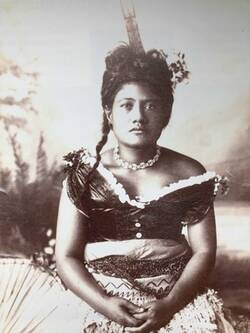Further Media
Producer unknown to us
Oceania, Polynesia, Tonga Archipelago (Tongatapu, 'Eua, Nomuka or Lifuka/Ha'apai group)
Before 1781
Midribs of coconut palm leaves, coconut fibers
Acquired in 1773–74 or 1777 on Captain James Cook’s second or third expedition in the Pacific. It is yet unknown by whom the object was acquired.
Brought from Great Britain to Germany by Benjamin La Trobe, a Moravian working in London.
Inv. No. 68365
This decorative comb (helu) consists of a total of 13 teeth cut from the midribs of coconut palm leaves, the upper third of which is trapezoidal and tapers to a triangular handle.
At the time of Cook’s landing in Tonga, high-ranking Tongans wore the helu in their hair like a tiara. A special decorative effect was achieved by artfully alternating natural bright and dark coconut fiber cords when weaving them together. Above all, such a decorative comb visibly emphasized the high social status of its wearer.
Of course, Captain Cook and his fellow travelers were unaware of the significance of the helu as a status symbol. He wrote, “There are many other articles of less note, that employ the spare time of their females; as combs, of which they make vast numbers.”
In fact, even the production of individual parts of a helu in Tonga was strictly divided according to the social rank of the women: The ribs of the leaves from the top of the coconut palms were obtained by ladies of higher rank, while ladies of lower rank made the threads (olongá) by rolling the coconut fibers with the palm of their hand. Like all weaving and basketry, the production of decorative combs was a matter of prestige, and the exclusive domain of women.
